Access and Sevices |
Ferries and Wharves
Ferries ran regular services from Sans Souci, on the eastern side of Botany Bay, and from La Perouse, at the north head of the Bay, as far back as 1898. After the construction of Captain Cook Drive, a macadamised road from Cronulla-Woolooware to Kurnell Village and the Refinery, passenger numbers fell and these services were running only intermittently by 1957. The last of the ferries ceased running in May 1965. There are currently plans for resuming the service from Brighton to Kurnell. The Brighton wharf is being modified to facilitate the service, though where it will berth at Kurnell is not yet clear.
The first wharf on record was the Holt wharf that extended from below the Cook obelisk out over what is known as Cook's Rock, where the Isaac Smith Memorial Tablet is affixed. |
 |
| In 1899 the State Government resumed the land for the Captain Cook Landing Place Reserve and appointed the Lands Department as Trustee. The Department rebuilt nearby Alpha House and constructed a new wharf to serve employees of the Reserve, residents, fishermen and visitors. After the wharf was built the Fisher family, who operated a boatshed and ferry service at La Perouse, increased the number of their ferry services to Kurnell. |
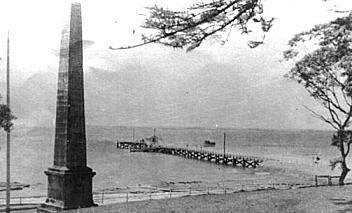
 |
| The park wharf was maintained and kept in good condition, but was demolished by the storms of 1974. Until the 1960s it had the shelter-shed, 'the church', at the end of it. This was the wharf used during the 1970 royal visit for the Cook bicentennial celebrations. |
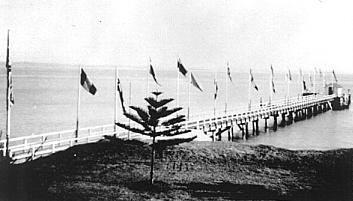
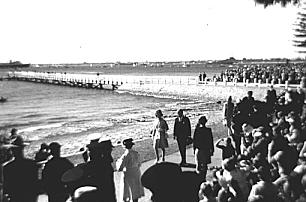 |
| There was a second wharf, and perhaps a third, at Kurnell before the 1952 refinery wharf was built. The one most remembered was the Dampier Street wharf because it was something of a failure! It was built with the intention of landing ferry passengers and also to allow the fishermen an easier access to their boats by avoiding a long walk up to the park. But it was strictly a high tide wharf. At low tide there was no water within metres of it and it fell into disuse and decay. |
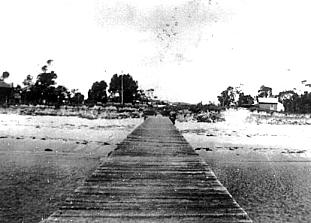

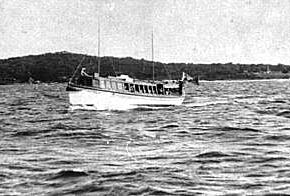 |
| Over the years the Fisher family had a string of ferries which they built at their La Perouse headquarters. Three of their other ferries, all 'steam boats', were the Solander which operated on the Hacking River, the James Cook which operated in Sydney Harbour, and the Erina which operated in Botany Bay and also from the Cronulla Ocean Wharf to Sydney via Kurnell and La Perouse. |

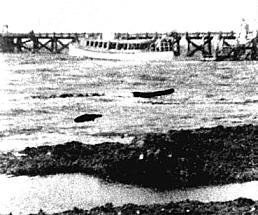 |
| top of page |



